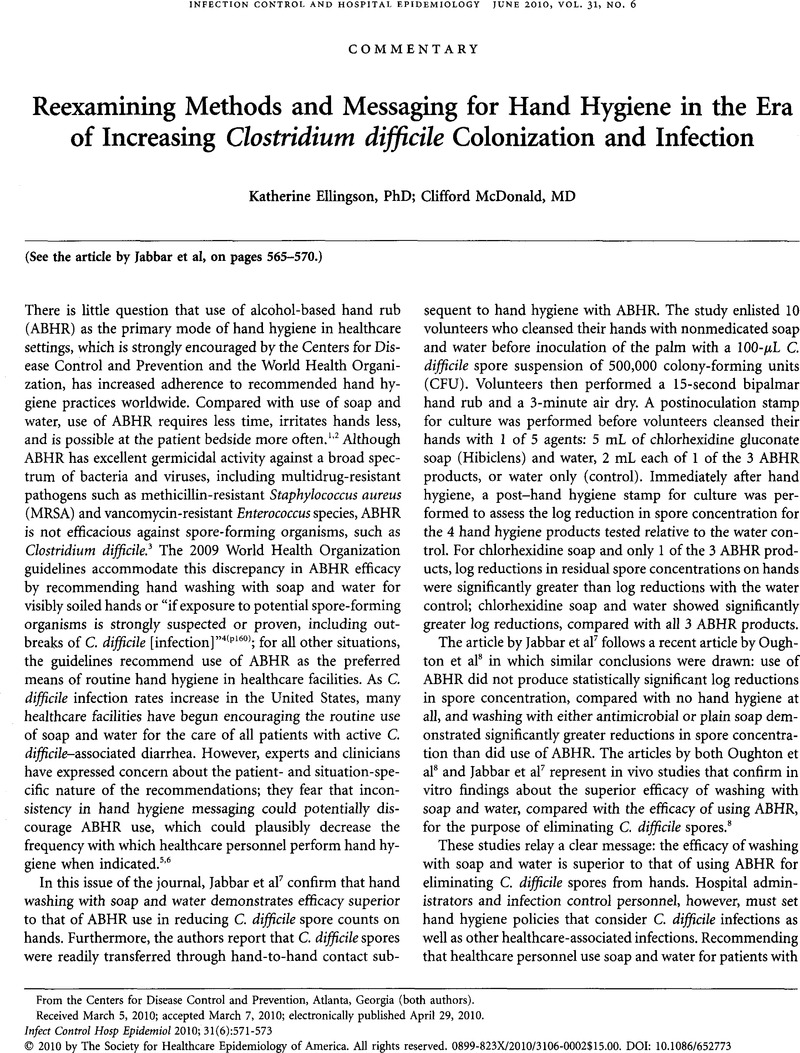Crossref Citations
This article has been cited by the following publications. This list is generated based on data provided by Crossref.
Larson, Elaine L.
Cohen, Bevin
and
Baxter, Kathleen A.
2012.
Analysis of alcohol-based hand sanitizer delivery systems: Efficacy of foam, gel, and wipes against influenza A (H1N1) virus on hands.
American Journal of Infection Control,
Vol. 40,
Issue. 9,
p.
806.
Wade, James C.
2013.
Neoplastic Diseases of the Blood.
p.
1165.
Tobar-Marcillo, Marco
Guerrero-Duran, Maria
Avecillas-Segovia, Ariana
Pacchiano-Aleman, Lillana
Basante-Díaz, Roberto
Vela-Vizcaino, Hiram
Espinosa-Aznar, Eduardo
Castorena García, Pedro
Santiago-Ramírez, Ricardo
and
Rivas-Bucio, Ixel
2018.
Metronidazole in the prevention of antibiotic-associated diarrhoea and Clostridium difficile infection in high-risk hospitalised patients.
Gastroenterología y Hepatología (English Edition),
Vol. 41,
Issue. 6,
p.
362.
Gould, Jane M.
and
Coffin, Susan E.
2018.
Principles and Practice of Pediatric Infectious Diseases.
p.
592.
Tobar-Marcillo, Marco
Guerrero-Duran, Maria
Avecillas-Segovia, Ariana
Pacchiano-Aleman, Lillana
Basante-Díaz, Roberto
Vela-Vizcaino, Hiram
Espinosa-Aznar, Eduardo
Castorena García, Pedro
Santiago-Ramírez, Ricardo
and
Rivas-Bucio, Ixel
2018.
Metronidazol en la prevención de diarrea asociada a antibióticos e infección por Clostridium difficile en pacientes hospitalizados de alto riesgo.
Gastroenterología y Hepatología,
Vol. 41,
Issue. 6,
p.
362.
Handy, Lori K.
Coffin, Susan E.
and
Gould, Jane M.
2023.
Principles and Practice of Pediatric Infectious Diseases.
p.
611.



